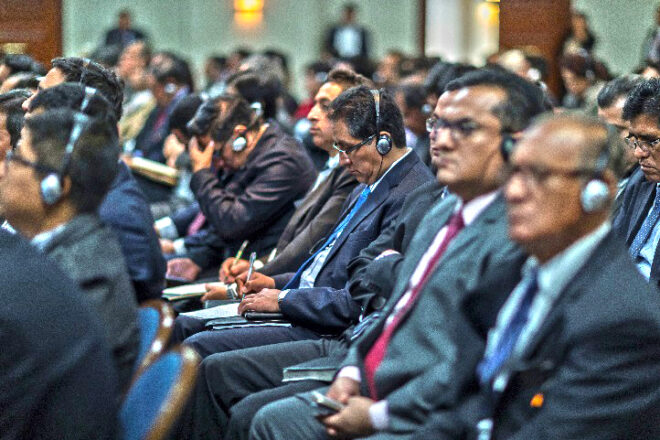SAIs China, Peru Join Forces to Address Natural Disaster Recovery Auditing

“El Niño Costero,” the phenomenon seriously affecting Peru during the first months of 2017, battered the nation with torrential rains and damaged some 21,323 kilometers of rural and non-rural roads; 260,970 houses; 2,148 schools; 700 health centers; 822 bridges; 77,104 hectares of cultivated areas; and 22,965 kilometers of irrigation canals. In total, infrastructure damage is estimated to be roughly two percent of the country’s GDP.
As part of the rehabilitation and reconstruction process, the Peruvian government approved a law that establishes (1) an extraordinary legal framework for intervention by national government and the Authority for Reconstruction with Changes (ARC); and (2) a control plan that includes simultaneous and subsequent control actions to be executed by Peru’s Supreme Audit Institution (SAI).
Simultaneous control, or real-time audit, differs from other types of control in that it encompasses dynamic and continuous processes with particular (and different) demands on organizing, executing, and communicating. For this reason, the Inter-American Development Bank (IADB) Peruvian office initiated coordination with Peru’s national government to generate a space to exchange technical knowledge and lessons learned on applying real-time auditing to rehabilitation and reconstruction processes.
The event, organized by the IADB alongside the Presidency of the Peruvian Council of Ministers, the SAI of Peru, the ARC, and the National Audit Office of the People’s Republic of China (CNAO), aimed to capture CNAO experience obtained immediately following the 2008 Wenchuan earthquake, experience cited and described in ISSAI 5520.
Two CNAO experts participated in the two-day event held in Lima, Peru, in August 2017, where they shared real-time audit experience directly with Peruvian central, regional and provincial officials; SAI Peru delegates (both in-person and via streaming and videoconferencing); and civil society representatives.
Day one included discussions on several real-time auditing topics, including audit approach key factors; audit plan implementation, execution and procedures; results communication system; and lessons learned. Additionally, the auditor’s role within the control system highlighted using information technologies and databases as a more modern audit approach. The second day afforded SAI Peru and ARC officials the opportunity to query, and consult with, the CNAO experts based on the previous day’s knowledge sharing activities.
Very few published experiences on applying real-time auditing to rehabilitation and reconstruction efforts exist. Therefore, this IADB-coordinated event proved quite fruitful for all, particularly those involved in the process of rehabilitating and reconstructing Peruvian areas devastated by El Niño Costero. Creating this knowledge sharing space also contributes to generating and strengthening relationships and communication and helps build capacity between SAIs, between nations.





